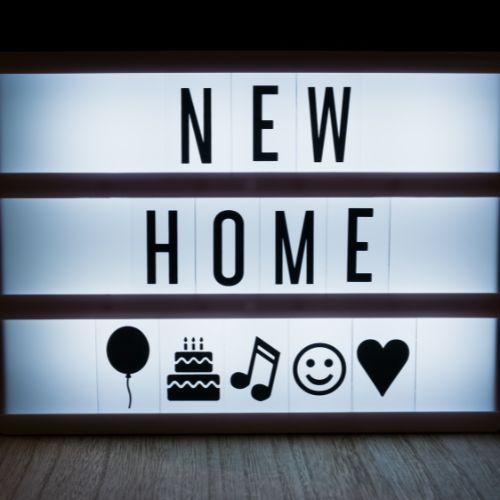
Form Follows Function: A Timeless Design Principle for Modern Living
|
|
Time to read 4 min

Welcome to our hub of new arrivals! Explore our latest additions, constantly...
|
|
Time to read 4 min
The phrase "form follows function" is a powerful axiom in the design world, articulating a philosophy that prioritizes functional efficiency over aesthetic embellishments. First coined by architect Louis Sullivan in his 1896 article, this principle has permeated various disciplines of design, from architecture to product design, and remains a foundational concept in our approach to modern aesthetics and utility.
Louis Sullivan, often regarded as the father of modernist architecture, introduced the concept of "form follows function" to emphasize that the shape of a building or object should primarily relate to its intended function or purpose. This idea was radical at the time, pushing back against the ornate designs of the 19th century that often prioritized decorative elements over usability.
As the 20th century progressed, this principle became a core tenet of the modernist movement. Architects and designers like Frank Lloyd Wright, who was mentored by Sullivan, and later proponents of the Bauhaus school in Germany, embraced and propagated the idea that design should be driven by the purpose of the space or object.
In today's eco-conscious world, the efficient use of materials and energy is paramount. Designs that adhere to the "form follows function" principle often use fewer resources, reducing waste and environmental impact. For instance, a 2019 study by the Environmental Protection Agency highlighted that efficient building designs could reduce energy use by up to 50%, underscoring the relevance of function-driven design in achieving sustainability goals.
Nauradika's "Eco-Friendly Lighting" range embodies this principle by combining energy efficiency with minimalist design, ensuring that each piece not only looks good but also performs its intended function effectively.
Modern design often involves the integration of technology, where functionality is key. Whether it's smart furniture or eco-friendly buildings, the design must accommodate technological advancements, a concept rooted in functionalism. For example, ergonomic office chairs that adjust to the user's body are designed with the function of promoting comfort and health, directly applying Sullivan's philosophy.
Nauradika's "Smart Desk Lamp" is a perfect example, offering adjustable brightness and USB charging ports to meet the multifunctional needs of modern workspaces.
Today's consumers increasingly favor products that offer both style and substance. A 2021 consumer survey revealed that 73% of buyers are more likely to purchase an item if its design directly contributes to its functionality. This trend indicates a strong market preference for designs that embody the "form follows function" ethos.
The "Multifunctional Sofa Bed" from Nauradika exemplifies this trend by providing a stylish seating option that easily converts into a comfortable bed, meeting the dual needs of aesthetics and functionality.
In interior design, "form follows function" encourages the creation of spaces that are not only beautiful but also highly functional. This principle is evident in the use of modular furniture, which can be adapted to various needs and spaces. Nauradika's "Modular Shelving System" offers a versatile storage solution that can be customized to fit any room, maximizing both space and usability.
Architects continue to embrace Sullivan's principle by designing buildings that prioritize function. Sustainable architecture often incorporates features such as natural lighting, energy-efficient materials, and flexible spaces that can be easily reconfigured for different uses. Nauradika's "Solar-Powered Outdoor Lights" highlight how form and function can coexist harmoniously, providing eco-friendly illumination that enhances outdoor aesthetics.
Product design frequently applies the "form follows function" mantra to create items that simplify and enhance daily activities. Nauradika's "Compact Kitchen Organizer" is designed to maximize storage in small kitchens, proving that practical design can also be sleek and modern.
As we move forward, the integration of advanced technologies and sustainable practices will further cement the relevance of "form follows function" in design. Innovations in materials science, for example, are enabling the creation of products that are both durable and environmentally friendly. Nauradika's "Recycled Glass Vase" demonstrates how innovative materials can be used to create functional yet beautiful decor items.
With the rise of remote work and flexible living arrangements, design needs to adapt to changing lifestyles. Furniture and decor that can serve multiple purposes will become increasingly important. Nauradika's "Foldable Desk" is a prime example, offering a compact work surface that can be easily stored away when not in use, catering to the needs of modern living.
Consumer expectations will continue to drive the demand for functional yet stylish products. By staying true to the principle of "form follows function," designers can create items that not only meet these expectations but also stand the test of time. Nauradika's "Adjustable Reading Lamp" combines elegant design with practical features, such as adjustable arms and dimmable lights, to meet the evolving needs of consumers.
"Form follows function" continues to be a relevant and influential principle in design because it responds to the practical, technological, and aesthetic needs of our time. It encourages designers to think critically about the utility of their creations, ensuring that every design decision, from the layout of a room to the curve of a chair, serves a purpose. By adhering to this principle, designers not only create objects and spaces that are more practical and sustainable but also foster a deeper connection with users who value functionality in their daily lives.
As we continue to navigate the complexities of modern living, embracing this time-tested principle can lead to more meaningful and sustainable design solutions, proving that good design is not just about how things look, but how they work.